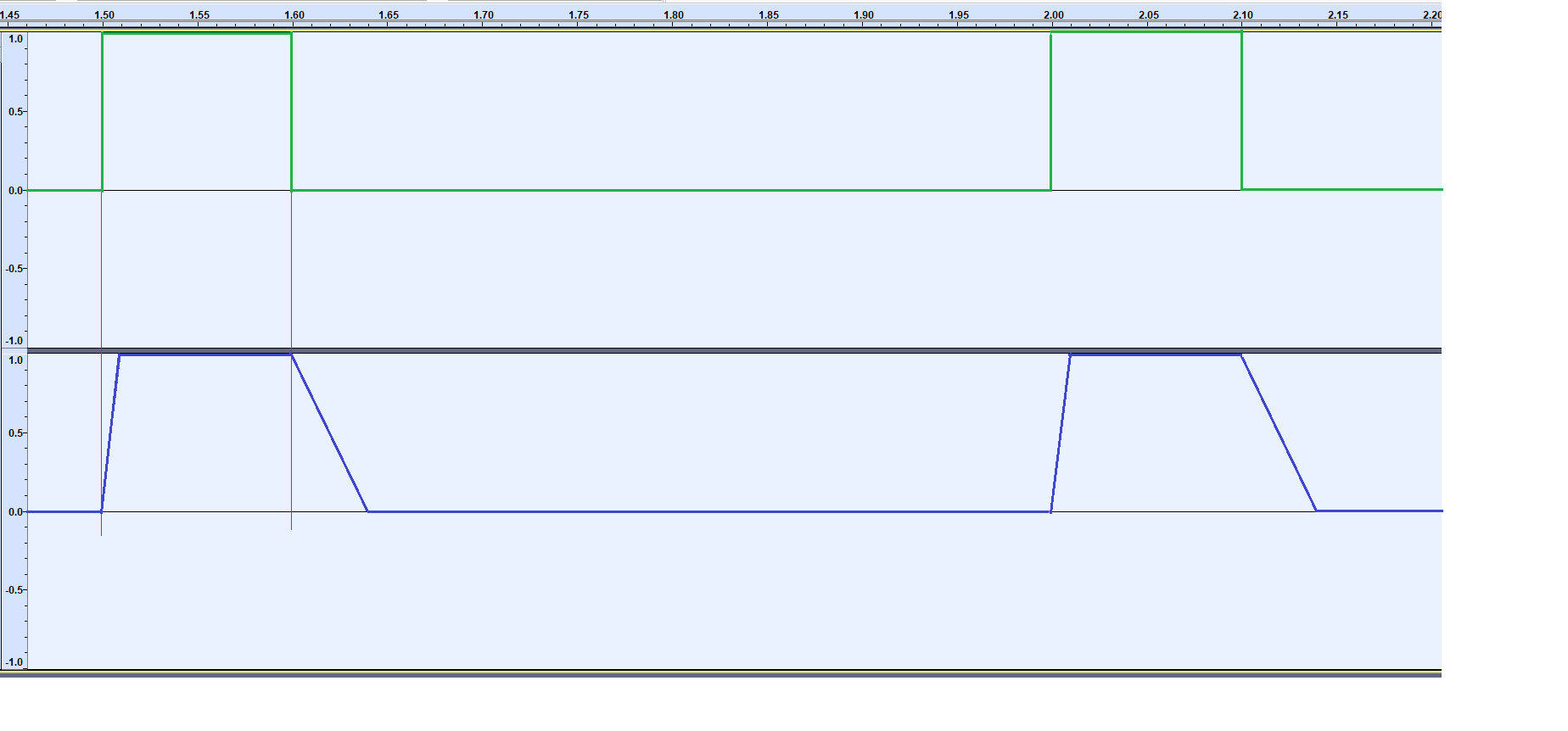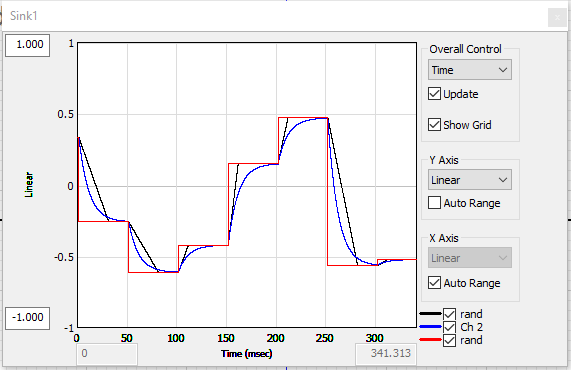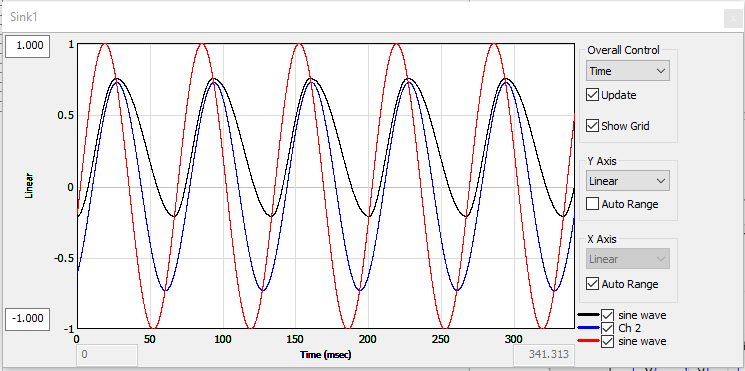Lin Smooth
About This Guide
This Application Note explains the use of the LinSmooth module in the Audio Weaver Application.
The LinSmooth Module
The LinSmooth module can be found in Sound Design/Effects folder or by using the search window in the module browser. It is called “Lin Smooth”.

Figure 1. Location in Module Browser
Linear versus exponential smoothing
The LinSmooth module’s algorithm differs from the smoothing algorithm built into many modules.
The modules with smoothing built-in use a one-pole IIR filter whose rise-time is defined as the time for the output to go from 0% to about 62% when the input goes from 0% to 100%. The rise and fall times for this type of filter are the same. The shape of the transition is exponential.
In the example below, the smoothing time is set to 20 msec.
Black: lnput signal
Blue: Smoothed signal

Exponential smoothing
The LinSmooth module, on the other hand, uses the current output along with the new output value to calculate the rate that will result in a fixed transition time from 0% to 100% with a linear slope. Depending on the distance between the new and old value, the slope will adjust automatically to make the transition time the same.

Linear smoothing
The LinSmooth supports individual slope control for increasing (TimeUp) and decreasing (TimeDown) levels.
Green: LinSmooth Input
Blue: LinSmooth Output
Settings:

Linear and exponential smoothing with random input
While the examples below show comparison between the LinSmooth module and the built-in smoothing in a ScalerV2, the LinSmooth module can of course be used for any purpose in addition to controlling volume.
The attached file LinSmooth_vs_ExpSmooth.awd generates a random number between -1 and 1 every 50 msec. The same signal is sent to a LinSmooth module and a ScalerV2 module, the latter with a DC Source of 1.0 and set to linear gain mode. The scaler’s output therefore shows the gain signal with the ScalerV2 module’s built-in exponential smoothing applied.
First, let’s set the smoothing times for both modules to 10 msec.
Black: LinSmooth output
Blue: ScalerV2 output showing exponential smoothing

Red: Random input
Black: LinSmooth output
Blue: ScalerV2 output showing exponential smoothing

In the example below, the LinSmooth’s up and down smoothing times are set to 20 msec. The Scaler’s smoothing time is set to 10 msec. The two controls track more closely (which may or may not be your goal).
Red: Random input
Black: LinSmooth output
Blue: ScalerV2 output showing exponential smoothing

In the example below, the LinSmooth’s up smoothing time is 10 msec and the down smoothing time is 30 msec. The Scaler’s smoothing time is set to 10 msec.
Red: Random input
Black: LinSmooth output
Blue: ScalerV2 output showing exponential smoothing

Using LinSmooth with Continuously Varying Signals
You can also use LinSmooth to change the shape of continuous signals such as sine waves. This example shows a 15 Hz sine wave. Note that the input sine wave (red) goes from -1.0 to 1.0.
Blue: through the exponential smoothing of the ScalerV2 (which acts as a low pass filter, attenuating and shifting in phase, but doesn’t change the shape).
Black: through a LinSmooth module with Up time = 10 msec and Down time = 30 msec. The signal is attenuated and shifted in phase, but its shape has been changed as well. The change in shape will increase with the sine wave’s frequency. This introduces harmonics into the result and is a form of distortion.

Tip:
When using LinSmooth with a module that already incorporates smoothing, set the smoothing time in the controlled module to 0.
